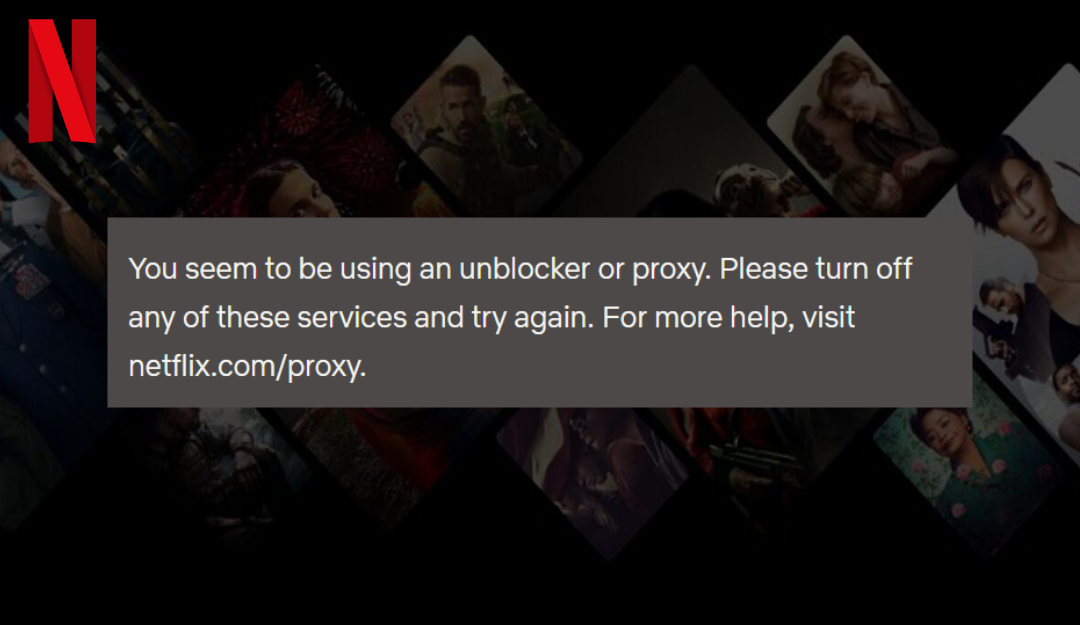If you’ve ever been frustrated by trying to access a website only to be told that it’s unavailable in your country, you’ve been geo-blocked. Geo-blocking is a common practice on the internet and restricts access to everything from online stores to streaming video content. Such Geographical blocking is a way of restricting access to online content based on a user’s geographic location. Geo-blocking works on all content types, including websites and web services, but it’s most notable for video content.
Table Of Content:
Video-sharing services and streaming platforms, like YouTube, Netflix, and Hulu, use geo-restrictions to make some of their content inaccessible to users from specific regions. This means that people in certain countries or regions are prevented from accessing certain websites or online services. The geo-restrictions practice holds great value for companies, especially ones with large amounts of intellectual property accessible online. Overall, geo-blocking is a powerful tool that can be used for various purposes. It is important to understand how it works and how it can be used to make the most of its potential.
Explore More ✅
VdoCipher ensures Secure Video Hosting with Hollywood Grade DRM Encryption
VdoCipher helps ver 2000+ customers over 40+ countries to host their videos securely, helping them to boost their video revenues.
Geo-blocking restricts access to an online service based on the users’ geographic location. When a user tries to access a website or online content restricted by IP based geo-blocking, the website will check the user’s IP address. If the IP address is not in the database of allowed locations, the user will be blocked from accessing the content.
How Geo-Blocking works
Each computer and digital device on the internet has a unique IP (Internet Protocol) numerical identifier known as IP Address. Every IP address has four octets, each of which can be between 1 and 256, separated by periods. IP addresses are necessary for Internet communication because they allow computers to recognize and connect. Whenever your computer (or device) requests to access content on a server, the server knows where to send the content based on your IP address. Depending on whether or not the server is allowed to display the requested content to IP addresses from specific geographical regions, it will either respond with the requested data or not do it and redirect you to a different page.
Geo-restrictions can be seen in a blocked website, streaming service or even a particular piece of content unavailability, such as a Hulu video. You must have seen Geo-blocking when you pay for a premium service like Netflix or Hulu. For example, if you live in the US and have an active Netflix subscription, you can stream the content only when you are within the US geographical region. If you go on vacation or access your account from other countries, you will not be able to access your same Netflix library.
In other words, when you connect to a website, it knows your IP address. As your IP address contains your geolocation information, the website knows if it can or can’t display the requested content to you.
Purpose of Geo-Blocking Video & Digital Content
There are several reasons why geo-blocking may be used. For example, a website may only want to provide services to users in a particular country to comply with local laws and regulations. Or, a website may only have the right to show specific content in certain countries. It is also used to block access to websites promoting illegal activities in some countries, such as online gambling. You may have seen online retailers, such as Amazon, using geo-blocking to make people use the local version of their website, which may charge higher prices than those listed in other countries.
Finally, geo-restrictions can also be used to control the spread of information. For example, a government might place a geo-restriction on a news website to prevent people from learning about a particular event. Geo-blocking can be frustrating for users who are prevented from accessing content that they want to see. However, it is important to remember that geo-blocking is a legal and legitimate way for website owners to control who can access their content. Whether or not geo-blocking is legal depends on the specific circumstances and jurisdiction.
In the bigger picture, geo-blocking is implied for:
- Preventing Copyright Infringement
- Protecting Licensing Agreements
- Filtering Content
To geo-block, a website may choose to block the network connection entirely, resulting in timeouts when trying to access the site. Other websites might serve a custom block page explaining why access is denied. Geo-restrictions may also happen at the application layer. A user may be able to load a site’s main page but find that the login button has disappeared or that some content is not available.
How is geo-block implemented?
There are a few different ways that geo-blocking can be implemented. The most common is to use IP addresses to determine a user’s location. IP addresses are assigned to internet-connected devices and can be used to approximate a user’s geographic location.
Another way to geo-block content is to use website cookies. Cookies are small pieces of data stored on a user’s computer and can be used to track their web browsing activity. By setting a cookie, a website can restrict access to users who are not in the desired geographic location.
Finally, some websites use geolocation services to determine a user’s location. These services use information like GPS data, IP addresses, and WiFi networks to triangulate a user’s position.
Geo-blocking is a controversial practice and has been the subject of several lawsuits. In some cases, geo-blocking is used to comply with copyright and licensing restrictions. In others, it may be used to discriminate against certain users or regions unfairly.
If you’re looking to access geo-blocked content in your country, there are a few ways to get around it. Using a VPN or proxy server can change your IP address and trick websites into thinking you’re in a different location. Additionally, some web browsers allow you to change your geographic location.
Common ways of blocking video access to avoid infringing copyrights
Blacklisting popular VPN providers – A VPN provider is a company that provides virtual private networking (VPN) services. VPN providers use various technologies to create a secure connection between a user’s computer and the company’s network. There are a few popular ways that VPN providers bypass geo-blocking. One way is to use a server located in a country that is not subject to geoblocking. Another way is to use a VPN provider that uses “stealth mode.” Technology. Stealth mode protocol (OpenVPN) is a technology that makes it difficult for ISPs to detect that a VPN is being used. Video streaming platforms like Netflix use industry-standard technologies to blacklist popular VPNs
Blocking connections from the same IP range – Users accessing a website or streaming platform from the same VPN server will have IPs within the same range. Blocking connections from the same IP range is a security measure to secure a connection between a particular IP or group of IP addresses. It is usually done to block or ban any undesirable hosts or websites from entering the node or server. This way, it ensures users access only the content available to their geolocation.
Explore More ✅
Protect Your VOD & OTT Platform With VdoCipher Multi-DRM Support
VdoCipher helps several VOD and OTT Platforms to host their videos securely, helping them to boost their video revenues.
Blacklisting DNS unblockers – DNS unblocking services redirect you to a region where you can access a website with restrictions. For example, the DNS unblocking service will first send the traffic to a US located server when accessing Netflix from abroad. That US server with a US IP address will access Netflix on your behalf and make the content available. Netflix makes your device ping another domain, and if a different IP shows up, their system would know you are bypassing their geo-blocks.
Geo-Blocking Video via VdoCipher
In the earlier part of the blog, we have seen why you don’t want certain digital assets to be globally accessible. You want restrictive access to videos, images and even documents based on geographical locations. Geoblocking is the way to do that.
VdoCipher, a secure DRM encrypted video hosting platform and a technical partner to AWS offers geo, IP and time-based restrictions to secure your videos. Vdocipher provides Hollywood grade DRM encryption similar to once used by Netflix and other streaming platforms. Video streamed via VdoCipher cannot be illegally downloaded using any software or internet plugins. Catering packaged video streaming solutions to e-learning, media and other marketing businesses, VdoCipher is helping them stream content on their site/app in a most secure and smooth manner.
Coming to IP Geo-restrictions on videos, VdoCipher has an easy to use Dashboard interface for implementing IP based Geo-restrictions. You can easily configure any complicated IP and country restrictions setting using the VdoCipher API guide. These restrictions can easily safeguard your videos on college and corporate networks. There are various code combinations used to create custom restrictions. If there is any confusion, do drop us a mail, and we can provide sample codes.
Subnet restriction is a security measure that allows an administrator to specify which subnets are allowed to access a network resource. This can be useful in preventing unauthorized access to a network or isolating a network from potential attacks.
IP Whitelisting & Blacklisting for Geo-Blocking
VdoCipher’s IP and Geo restriction uses JSON based configuration, allowing infinite customizability. For example, you may require a whitelist within a blacklist within a whitelist. It can be achieved with a small JSON in our config. The best part is the possibility of infinite nesting.
The IP whitelist allows for CIDR based configuration setup over corporate and university subnets. The CIDR configuration also allows you to constrain specific ISP networks. It proves valuable in setting up Value-added-services on ISP and Telecom networks.
Country-specific restriction sample code for playback access in only India and Great Britain:
[{
"action": "false",
"ipSet": [],
"countrySet": []
},
{
"action": "true",
"ipSet": [],
"countrySet": ["IN","GB"]
}]
Geo-Blocking is one of VdoCipher’s security features. Other multiple features for secure video hosting are:
- DRM Encrypted video streaming
- Dynamic watermarking to Block Screen Capture
- Offline downloads with time restrictions
- Smart HTML5 player with adaptive bitrate streaming
- Multi-DRM for videos (Google Widevine and Apple FairPlay)
- OTP-based backend authentication
- Ready-to-Use VdoCipher Plugin
Conclusion
Geo-blocking is often used to prevent users from accessing content not available in their country. For example, a user in the United States may be unable to access a website that is only available in the United Kingdom. Geo-blocking is a controversial practice, as it can be used to limit access to information and content. Critics argue that geo-blocking violates the free flow of information and creates artificial barriers to content.
Supporters of geo-blocking argue that it is necessary to protect intellectual property rights and prevent users from accessing content that is not intended for them. Geo-blocking has increased in recent years as more content is being made available online.
FAQs
What is meant by geo-blocking?
Geo-blocking is the process of restricting access to content based on a user’s geographic location. This can be done for a variety of reasons, including copyright protection, censorship, and security.
What is geo-blocked content?
Geo-blocked content is content that is only available in certain geographic locations. This can be due to copyright restrictions, censorship, or other reasons.

What is geo-restricted Netflix content?
Netflix content that is geo-restricted is content that is not available in all regions. This content is typically blocked due to licensing agreements that Netflix has in place with different content providers.
What are the consequences of geo-blocking?
There are a few potential consequences of geo-blocking. First, it can prevent people from accessing content that they would otherwise be able to enjoy. This can be frustrating for users, and may even lead to them finding ways to circumvent the geo-blocking (which can have legal consequences). Additionally, geo-blocking can also lead to decreased competition, as businesses in blocked regions may be at a disadvantage.
Supercharge Your Business with Videos
At VdoCipher we maintain the strongest content protection for videos. We also deliver the best viewer experience with brand friendly customisations. We'd love to hear from you, and help boost your video streaming business.


My expertise focuses on DRM encryption, CDN technologies, and streamlining marketing campaigns to drive engagement and growth. At VdoCipher, I’ve significantly enhanced digital experiences and contributed to in-depth technical discussions in the eLearning, Media, and Security sectors, showcasing a commitment to innovation and excellence in the digital landscape.
